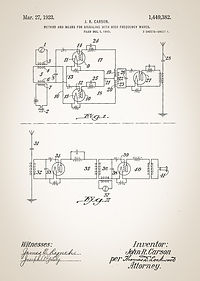

Metrocrest Amateur Radio Society

Way Back When
June
10–11 June 1933 (It wasn’t always the last weekend in June.)—The first ARRL Field Day was held for all hams with portable station licenses. Only stations operating away from the home address—literally, “in the field”—were eligible to submit scores. About 50 logs were turned in that year.
In 1937, the event moved to the third weekend in June (19–20). In 1937 it was the second weekend.
In 1941, the League had to get permission from the FCC to hold Field Day. This was before Pearl Harbor, but emergency regulations were in place.
In 1942, the ARRL suggested using signal flags to practice field communications.
In 2021, close to 27,000 amateur operators participated during the last full weekend in June.
25 June 1982—Lyle Johnson, WA7GXD, successfully initiated the first Amateur packet radio contact with all-American hardware and software, using the Tucson Amateur Packet Radio Terminal Node Controller (TNC). At the receiving end was Den Connors, KD2S, who was co-located with Lyle at the WA7GXD station. The tests were conducted at 146.55MHz in the Amateur two-meter band, with both stations sending plain-text ASCII messages. More at TAPR https://tapr.org/history/.

20 June 1840—Samuel Finley Breese Morse was granted a patent for telegraphy signals.


Birthdays

Karl Ferdinand Braun (6 June 1850 – 20 April 1918) was a German inventor, physicist and Nobel laureate in physics. Braun contributed significantly to the development of radio and television technology: he shared with Guglielmo Marconi the 1909 Nobel Prize in Physics. In 1897, he built the first cathode-ray tube (CRT) and cathode ray tube oscilloscope. The CRT became the cornerstone in developing fully electronic television.

Drawing of Braun’s CRT ca 1897

Sir Oliver Joseph Lodge, FRS (12 June 1851 – 22 August 1940) was a British physicist and writer involved in the development of key patents for radio. He identified electromagnetic radiation independent of Hertz’ proof and at his 1894 Royal Institution lectures, Lodge demonstrated an early radio wave detector he named the “coherer.” Around 1898, he invented a crystal diode rectifier or cat’s whisker diode.

Cat Whisker Detector
Wellcome Library, London Photograph by Lafayette Ltd.
James Clerk Maxwell (13 June 1831 – 5 November 1879) was a Scottish scientist in the field of mathematical physics. His most notable achievement was to formulate the classical theory of electromagnetic radiation, bringing together for the first time electricity, magnetism, and light as manifestations of the same phenomenon.
Maxwell calculated that the speed of propagation of an electromagnetic field is approximately that of the speed of light. He showed that the equations predict the existence of waves of oscillating electric and magnetic fields that travel through empty space at a speed that could be predicted from simple electrical experiments.


John Renshaw Carson (28 June 1886 – 31 October 1940) was a scientist at AT&T Bell Labs. A noted transmission theorist for early communications systems, he invented single-sideband modulation in 1915 to transmit multiple telephone calls simultaneously on a single electrical circuit.
